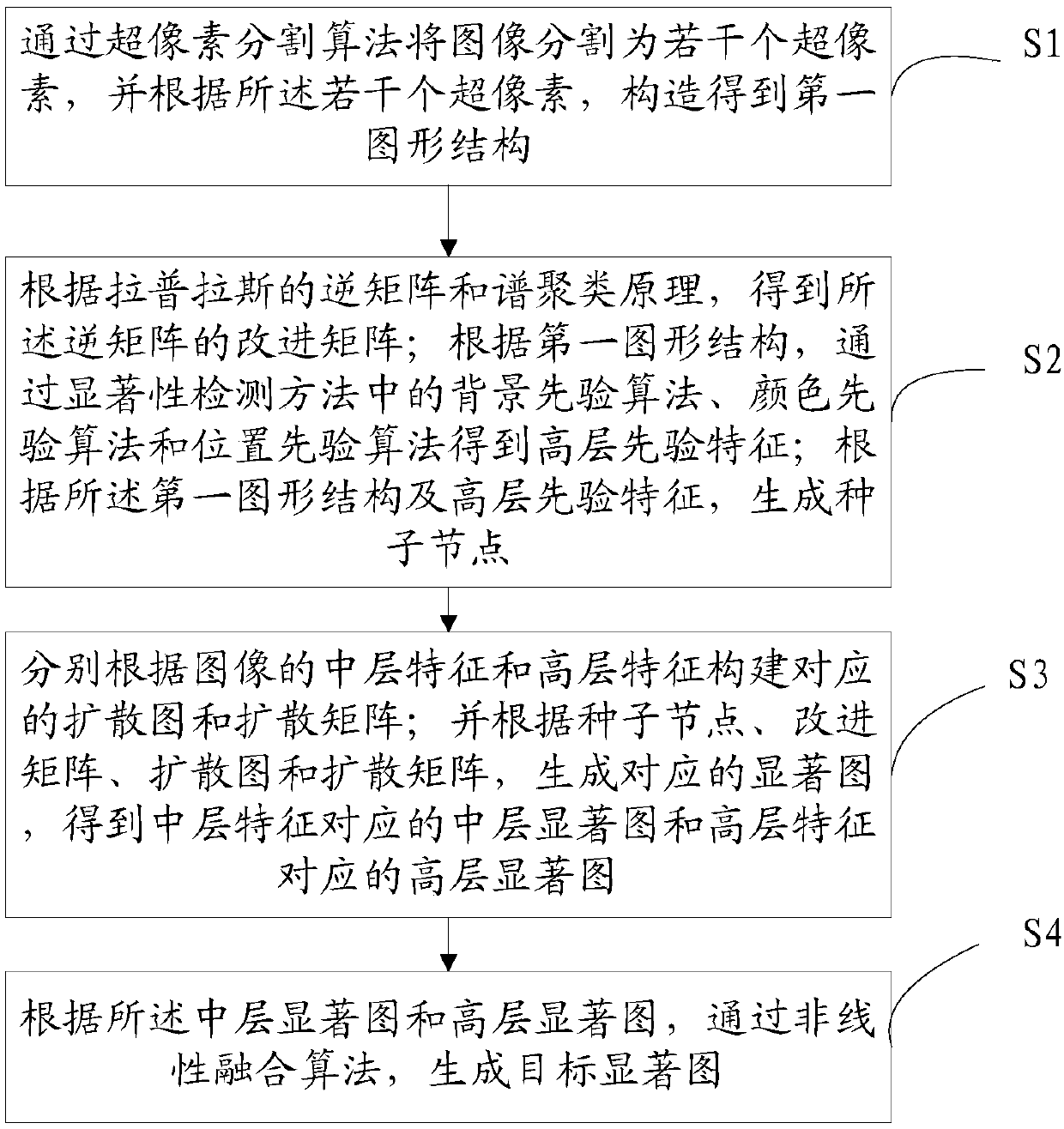Image saliency detection method and terminal based on multi-feature diffusion
A detection method and multi-feature technology, applied in the field of image processing, can solve the problems that the background area cannot be well suppressed and the detection of salient objects is not prominent, so as to achieve the effect of improving the accuracy
- Summary
- Abstract
- Description
- Claims
- Application Information
AI Technical Summary
Problems solved by technology
Method used
Image
Examples
Embodiment 1
[0095] The invention provides an image saliency detection method based on multi-feature diffusion, comprising the following steps:
[0096] S1: dividing the image into several superpixels by SLIC (simple linear iterative cluster) algorithm, and constructing a first graph structure according to the several superpixels;
[0097] The step S1 is specifically:
[0098] S101: Segment the original image of the SLIC algorithm into N superpixels;
[0099] Step S101 is specifically the process of converting the color image into a 5-dimensional feature vector in CIELAB color space and XY coordinates by using the SLIC algorithm, then constructing a distance metric for the 5-dimensional feature vector, and performing local clustering of image pixels. The SLIC algorithm can generate compact and approximately uniform superpixels, and has a high comprehensive evaluation in terms of computing speed, object contour preservation, and superpixel shape, which is more in line with the expected seg...
Embodiment 2
[0162] This embodiment is a specific application scenario of the first embodiment above.
[0163] First, when constructing the graph, a two-layer connection graph is used, and the edges of the graph are determined by the difference of features. When selecting background nodes, set the parameter c=3, and select nodes whose significance value is less than 0.5 as background nodes, and connect them to each other. Through the connected graph, calculate the inverse matrix of Laplacian that discards the eigenvectors with less information And the seed nodes obtained through high-level priori constitute a new diffusion method. Then, the saliency value of the image obtained by using the lab color space feature of the image as the bottom layer feature is used as the middle layer feature of the image again to construct a diffusion matrix, and the middle layer saliency map is obtained through the thirteenth formula. Similarly, the high-level prior composed of the background prior and th...
Embodiment 3
[0164] Please refer to figure 2 , Embodiment three of the present invention is:
[0165] The present invention provides an image saliency detection terminal based on multi-feature diffusion, which includes a memory, a processor, and a computer program stored on the memory and operable on the processor, and the processor implements the following steps when executing the program :
[0166] S1: dividing the image into several superpixels by SLIC (simple linear iterative cluster) algorithm, and constructing a first graph structure according to the several superpixels;
[0167] The step S1 is specifically:
[0168] S101: Segment the original image of the SLIC algorithm into N superpixels;
[0169] Step S101 is specifically the process of converting the color image into a 5-dimensional feature vector in CIELAB color space and XY coordinates by using the SLIC algorithm, then constructing a distance metric for the 5-dimensional feature vector, and performing local clustering of im...
PUM
 Login to View More
Login to View More Abstract
Description
Claims
Application Information
 Login to View More
Login to View More - R&D
- Intellectual Property
- Life Sciences
- Materials
- Tech Scout
- Unparalleled Data Quality
- Higher Quality Content
- 60% Fewer Hallucinations
Browse by: Latest US Patents, China's latest patents, Technical Efficacy Thesaurus, Application Domain, Technology Topic, Popular Technical Reports.
© 2025 PatSnap. All rights reserved.Legal|Privacy policy|Modern Slavery Act Transparency Statement|Sitemap|About US| Contact US: help@patsnap.com


